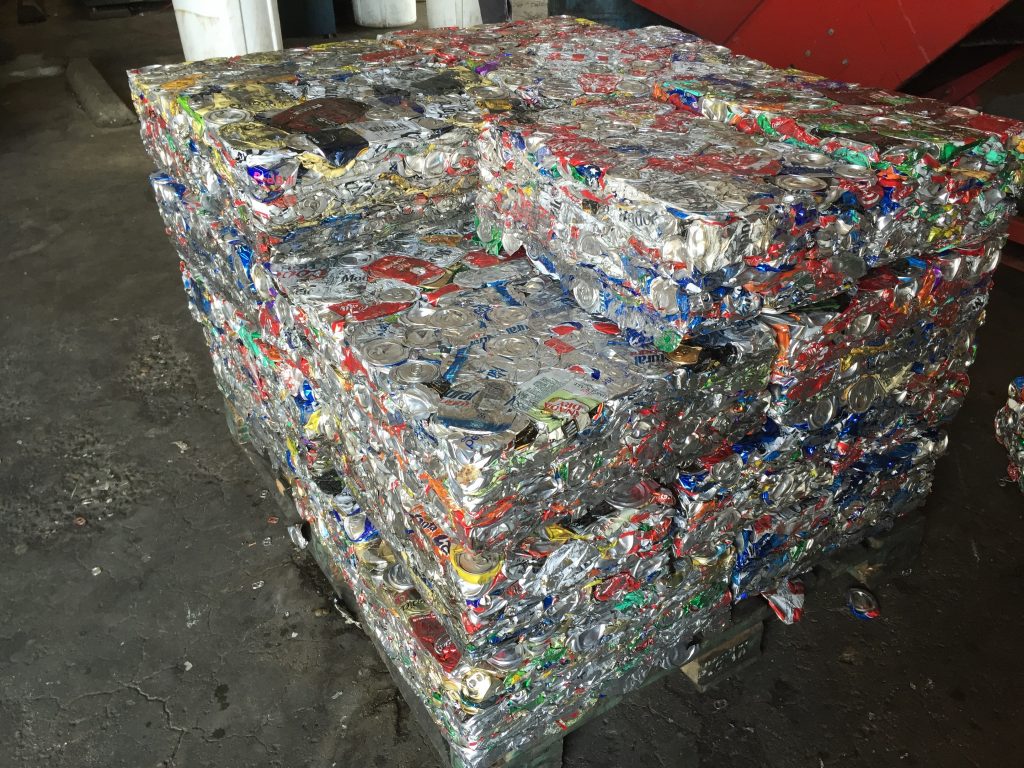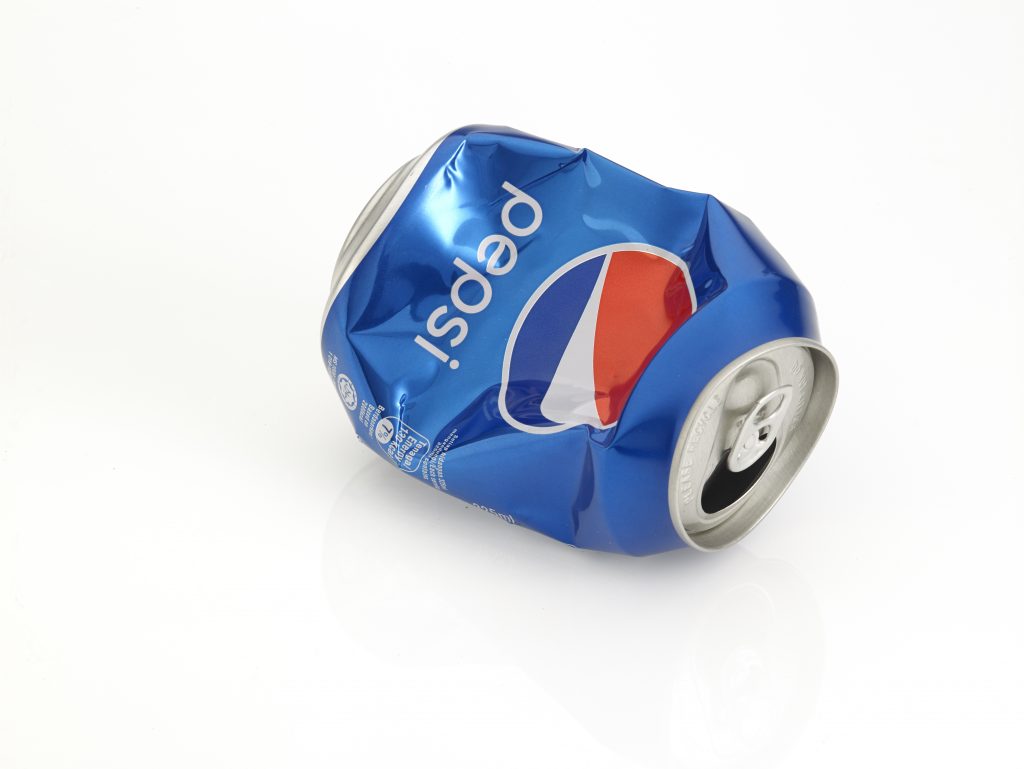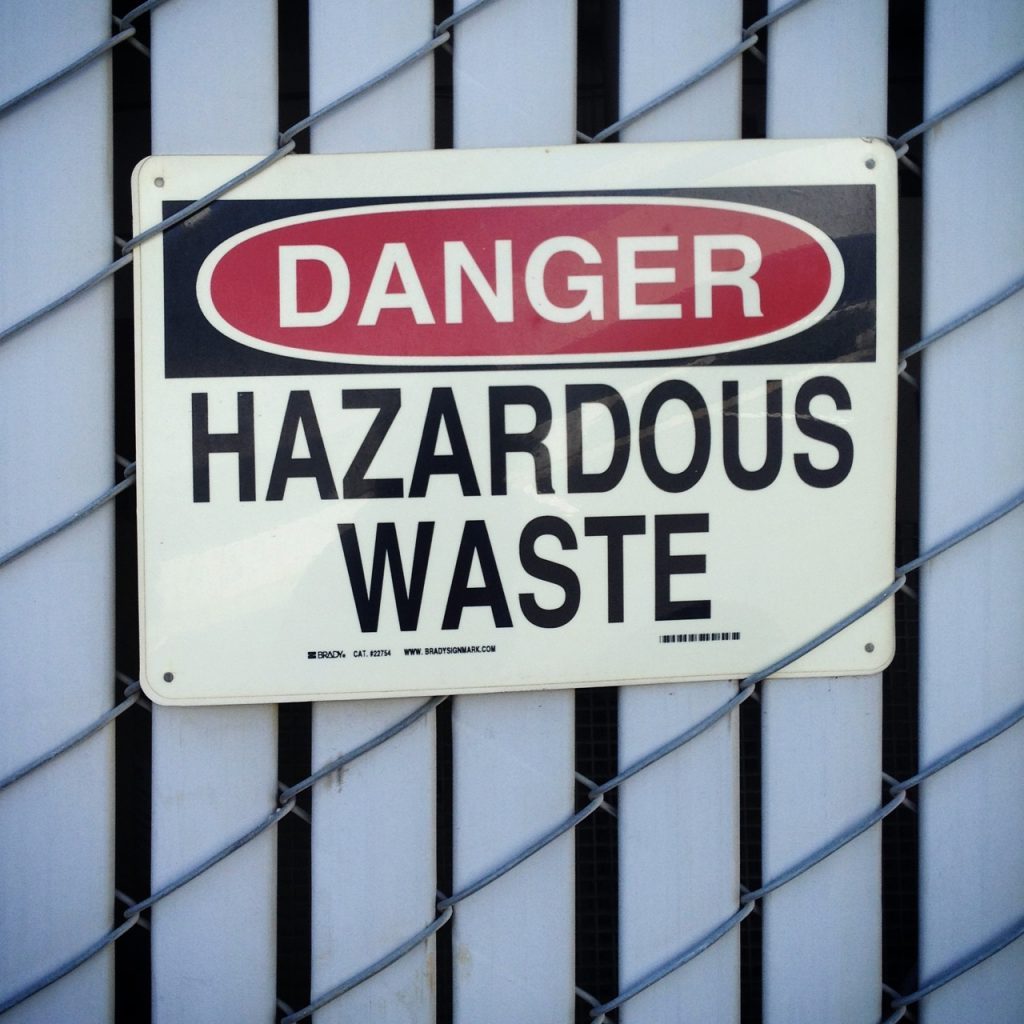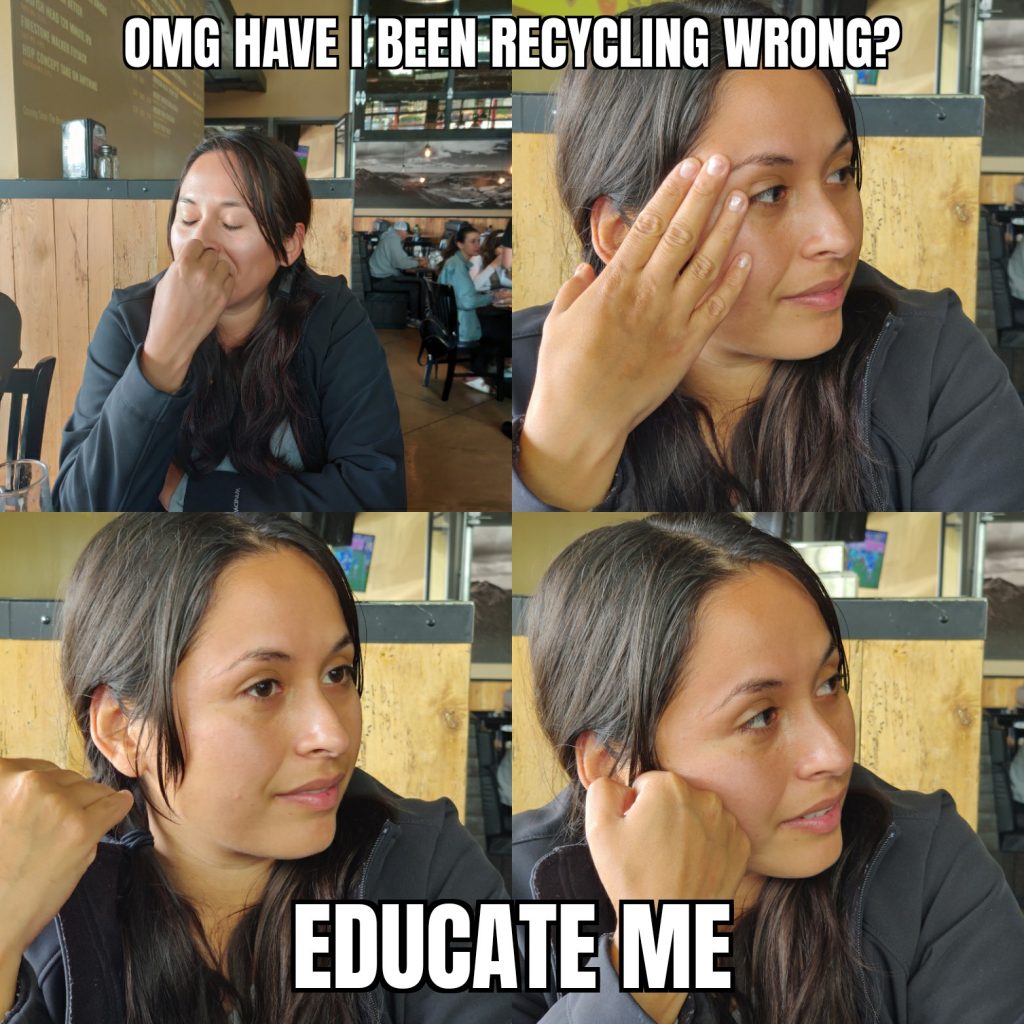How is California doing with recycling?
If you’re wondering how California is doing with recycling, the short answer is, not very well. Because of California’s location on the West Coast, the state has depended heavily on selling recyclables to China. Since China put the National Sword Policy into action in 2017, the U.S. has been struggling to support the recycling system and keep it from crumbling. For those of you who haven’t read our first blog on the business of recycling, we recommend reading it first, it will blow your recycling mind!

A National Sword Policy Refresher
As a refresher, here is a quick summary of the National Sword policy. The U.S. has been dependent on China buying our recycling since 1992. This dramatically changed in 2017, when the National Sword Policy came into effect. At first, only a few restrictions were put in place, like rejecting contaminated recycled materials, meaning recyclables that weren’t clean. This included everything from leftover liquids to food left in plastic containers that would contaminate other materials in the haul, such as paper.
Now, China has stopped accepting any recyclable materials, primarily because of the lack of clean materials being sent and a drop in the price of oil. Plastic is made from oil, so when the price of oil is high, it’s cheaper to use recycled plastic. Vice versa, when oil is cheap, it is more economical for companies to produce new plastic rather than bother with recycled plastic. For a deeper dive into China’s National Sword Policy is, take look at our other recycling blog.
Coastal States Have the Biggest Burden
Coastal states seem to have the biggest burden in the wake of these new policies, due to these states’ dependence on exporting recyclables to other countries, primarily China. Even though states that don’t border an ocean escaped the initial hardship of the National Sword Policy (NSP), they too are now dealing with hardship in the recycling sector. The negative effects lagged for states in the interior of the country because they had more domestic markets to sell to, allowing more time to pass before they felt the true impact of NSP. US depended heavily on China for recycling their goods, more than initially anticipated. Want to know how other states are dealing with this recycling crisis? Check out this website!

Recycling cans and bottles: California Recycling Value (CRV)
If you collect cans and bottles at home and return them for the deposit, you might have noticed that your local recycling center is closed. This is because the cost of recycling our bottles and cans is increasing while the selling price is decreasing. With little to no profits coming in, a business can no longer sustain itself. This situation led rePlanet, one of the biggest container recycling companies in California, to close all 238 of its recycling centers. With rePlanet’s closure, people are recycling fewer bottles and cans statewide. Currently, you can still bring your bottles and cans to certain grocery stores
Many California Retailers Flout Bottle, Can Recycling Law
What can we do to help?
Get recyclated (educated+ recycled= recyclated)
The recycling world is ever changing, the best thing you can do is keep yourself updated. If you are a local, the easiest way is to sign up for IWMA updates on their website here. For non-locals, your county should have a similar website, time to visit our dear friend google.
Recycling is Broken. Here is how we can fix it.
If you don’t know if it’s recyclable, toss it in the trash
If you don’t know if something is recyclable, keep calm, google it, or toss it. A lot of people toss items in the recycling bin hoping that they will be used to make something else. This is called wishcycling, hoping the item you toss in the blue bin will be recycled. Wishcycling has led us to develop bad recycling habits, for example, trying to recycle items that have been contaminated with food or liquid. Contamination is a huge problem in the recycling industry, and it can send an otherwise perfectly good batch of materials to a landfill instead of to a recycling center.
How do you avoid contamination? Don’t place items that aren’t recyclable in the recycling bin. Plastics that have food on them are not recyclable. They must be washed and cleaned to be recyclable. The best thing to do is to research what materials you can recycle and remember that if you aren’t totally sure something is recyclable, don’t risk it; toss it in the trash!
A shocking list of contaminants you wouldn’t even think of:
- Glue (if paper has glue on it, it is not recyclable, however you can cut it out if it is a small portion of the paper)
- Singing cards (they are considered hazardous because they all contain mercury in them, yikes)
- Plastic bags (they get clogged at recycling facilities)
- Glitter (sorry your kids art craft covered in glitter is not recyclable, sadness)

Hazardous items shouldn’t be recycled or put in the trash
If there is any chance that an item you are tossing might be hazardous, it shouldn’t be recycled or placed in the regular trash. Instead, keep it with you and find out how to safely dispose of it. Take batteries, for example, they can leak harmful chemicals into our soil and water if not properly handled.

Recycling Plastic update
The only plastics that are recyclable in SLO county are plastic #1 and plastic #2, specifically if they are rigid plastic bottles with a neck, such as milk jugs and plastic bottles. Flimsy plastic no matter what type it is, is not recyclable. *GASP* For more shocking updates on what is recyclable check out IWMA’s webpage here.
Want to know more? Part two of this blog will be headed your way soon!
Help protect and restore the Morro Bay estuary
- Donate to the Estuary Program today and support our work in the field, the lab, and beyond.
The Estuary Program is a 501(c)3 nonprofit. We depend on funding from grants and generous donors to continue our work. - Support us by purchasing estuary-themed gear from ESTERO. This locally owned and operated company donates 20% of proceeds from its Estuary clothing line and 100% of Estuary decal proceeds to the Estuary Program. Thank you, ESTERO!
- Purchase items from the the Estuary Program’s store on Zazzle. Zazzle prints and ships your items, and the Estuary Program receives 10% of the proceeds. Choose from mugs, hats, t-shirts, and even fanny packs (they’re back!) with our fun Estuary Octopus design, our classic Estuary Program logo, or our Mutts for the Bay logo.
Thank you for your support!
Work Cited
Cbs. “Many California Retailers Flout Bottle, Can Recycling Law.” CBS San Francisco. CBS San Francisco, February 13, 2020. https://sanfrancisco.cbslocal.com/2020/02/13/many-california-retailers-flout-bottle-can-recycling-law/.
“Home.” Electronics Take Back Coalition. Accessed March 20, 2020. http://www.electronicstakeback.com/green-design-vs-greenwashing-2/hard-to-recycle/.
Pyzyk, Katie. “What’s next for California Container Recycling after RePlanet’s Closure?” Waste Dive, August 28, 2019. https://www.wastedive.com/news/whats-next-for-california-container-recycling-after-replanets-closure/560916/.
Torres, Michael. “Recycling Options Diminish after Hundreds of California Recycling Centers Shut Down.” KSBY, August 7, 2019. https://www.ksby.com/news/local-news/slo-county-beverage-retailers-required-to-buy-back-crv-bottles-cans.
“What Can I Recycle in San Luis Obispo County?” SLO County IWMA. Accessed March 20, 2020. https://www.iwma.com/.